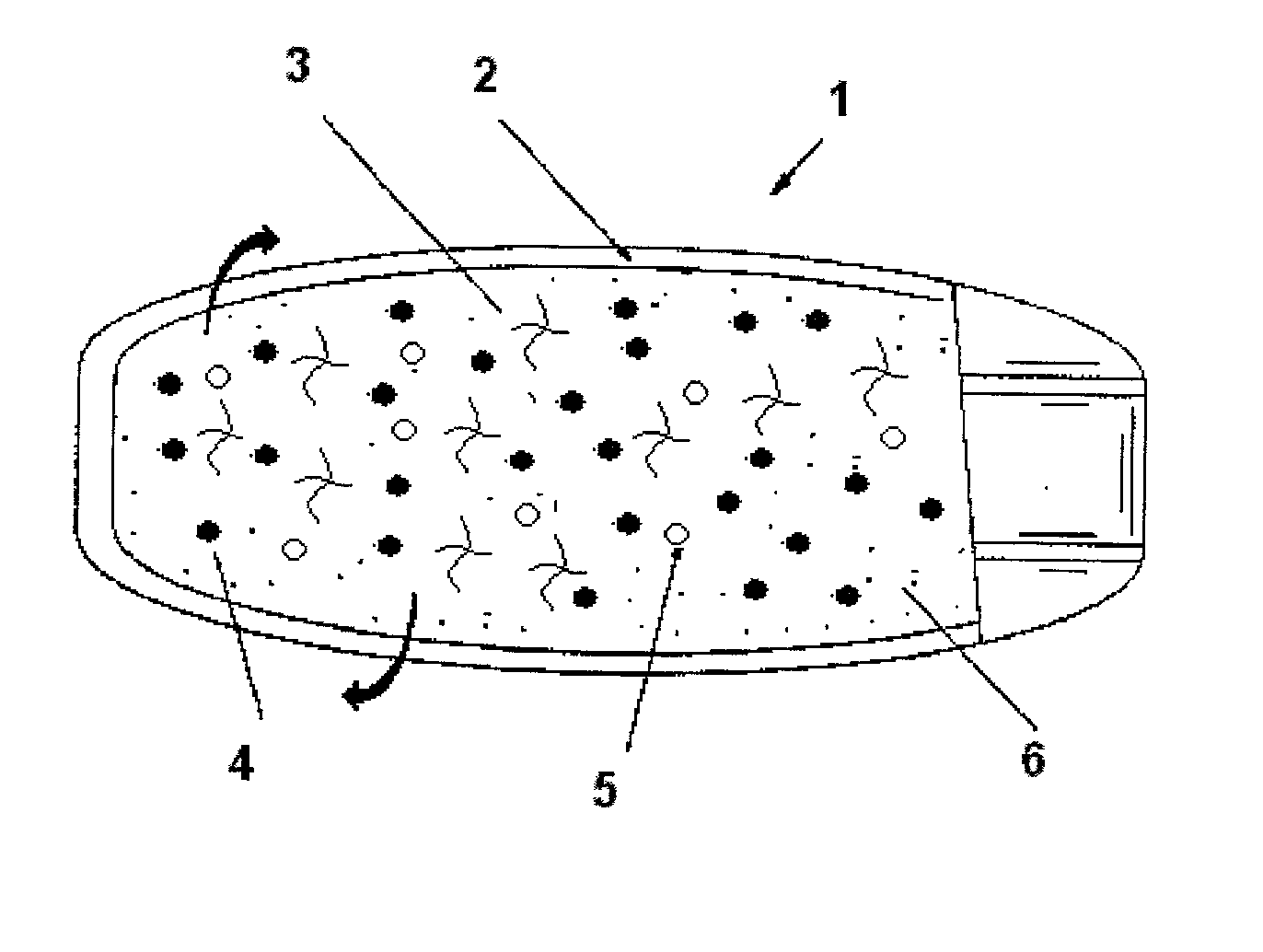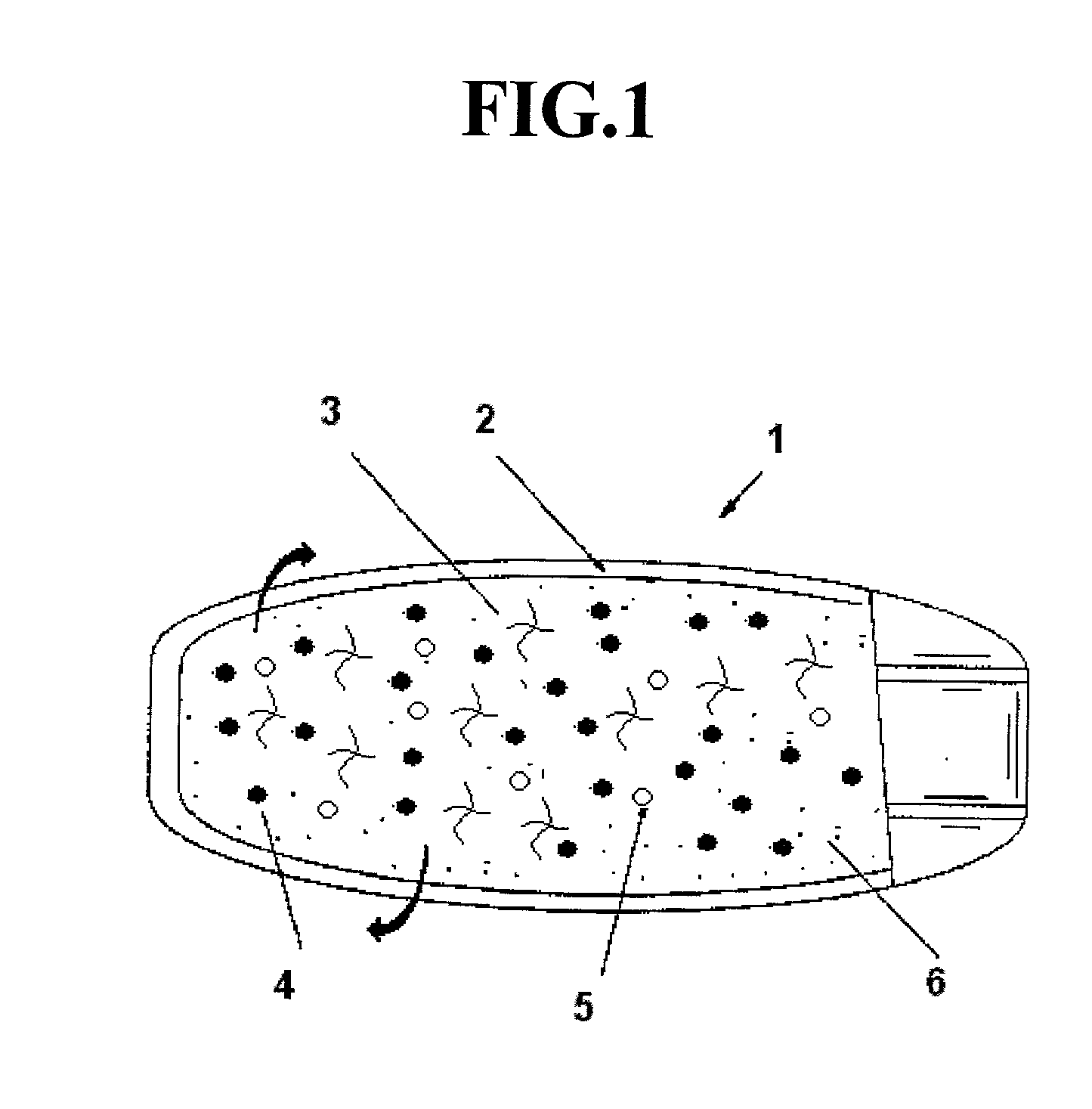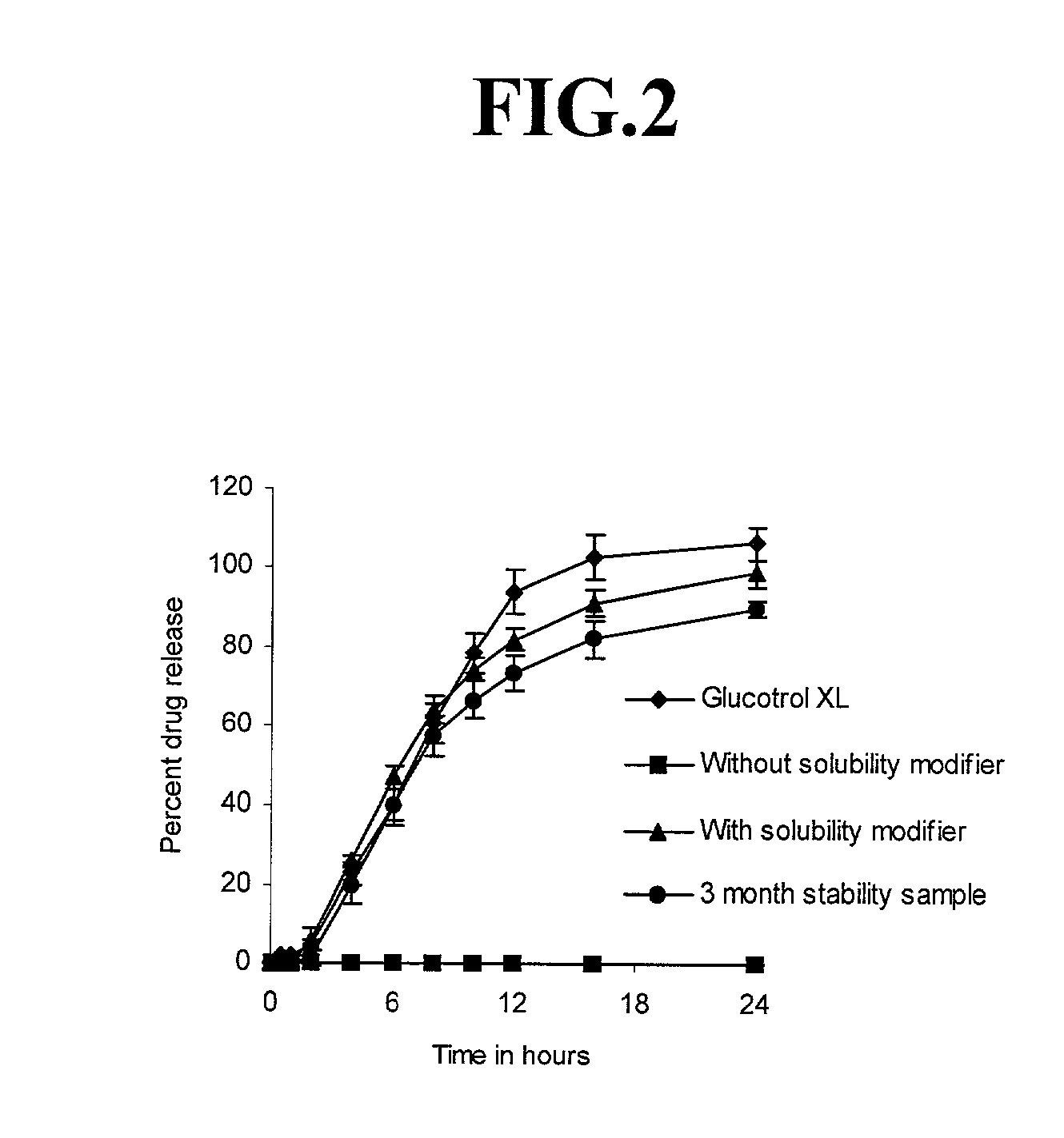Pharmaceutical compostion for extended/sustained release of a therapeutically active ingredient
a technology of therapeutically active ingredients and compostions, which is applied in the direction of antibacterial agents, extracellular fluid disorders, metabolic disorders, etc., can solve the problems of limited use, difficult to deliver drugs, and limited use, so as to increase the solubility of therapeutically active ingredients and reduce the difficulty of drug delivery. , the effect of simple design
- Summary
- Abstract
- Description
- Claims
- Application Information
AI Technical Summary
Benefits of technology
Problems solved by technology
Method used
Image
Examples
example 1
[0095] A pharmaceutical composition for extended release of a weakly acidic drug, glipizide, is manufactured as follows
[0096] Core tablets of glipizide were prepared as follows
1 S. No. Ingredients % w / w Grams mg / tablet 1 Glipizide 2.78 6.95 10.00 2 TRIS buffer 48.61 121.53 175.00 3 Mannitol 29.89 74.73 107.60 4 Sodium chloride 9.72 24.30 35.00 5 Polyvinyl pyrrolidone 5.00 12.50 18.00 6 Magnesium stearate 1.50 3.75 5.40 7 Talc 2.00 5.00 7.20 8 Aerosil 0.50 1.25 1.80
[0097] TRIS buffer (Loba Chemie, India) was mixed with directly compressible mannitol (Pearlitol SD 200, Roquette, France) and sodium chloride (Loba Chemie, India) and then passed through a 30-mesh sieve (British Standard Sieves, BSS). Glipizide was mixed with a part of the portion obtained above and after mixing, was passed through a 30-mesh sieve (BSS). The blend was mixed for 10 minutes and polyvinyl pyrrolidone (Plasdone K 29 / 32, ISP, USA) was added to the mixture. The mixture was granulated with ethanol and the result...
example 2
[0102] Core tablets of glipizide of following composition were prepared as per the procedure outlined in example 1
3 S. No. Ingredients % w / w Grams mg / tablet 1 Glipizide 2.78 2.78 10.00 2 TRIS buffer 48.61 48.61 175.00 3 Mannitol 30.39 30.39 109.40 4 Sodium chloride 9.72 9.72 35.00 5 Polyvinyl pyrrolidone 5.00 5.00 18.00 6 Magnesium stearate 1.00 1.00 3.60 7 Talc 2.00 2.00 7.20 8 Aerosil 0.50 0.50 1.80
[0103] 100 of these tablets were placed in a laboratory scale 10" perforated coater along with 350 grams of filler tablets (tablets made using 7.00 mm round deep concave punches and containing microcrystalline cellulose, starch, dibasic calcium phosphate, magnesium stearate, and aerosil) and coated with a coating solution comprising of
4 S. No. Ingredients % w / w Grams 1 Cellulose acetate 2.58 65.00 2 Triacetin 0.26 6.50 3 PEG-400 0.52 13.00 4 Polyvinyl pyrrolidone 0.64 16.25 5 Methanol 24.00 604.65 6 Methylene chloride 72.00 1813.95
[0104] The coating solution was prepared as per the proc...
example 3
[0106] Example 2 was repeated except that the following coating compositions were used to explore the possibility of varying the concentrations of a water-soluble plasticizer (PEG-400) and plasticizer having limited solubility in water (Triacetin).
5 % w / w S. No. Ingredients A B C D 1 Cellulose acetate 2.580 2.420 2.420 2.760 2 Triacetin 0.258 0.242 0.484 0.552 3 PEG-400 0.516 0.726 0.484 --4 Polyvinyl pyrrolidone 0.645 0.605 0.605 0.690 5 Methanol 24.00 24.00 24.00 24.00 6 Methylene chloride 72.00 72.00 72.00 72.00
[0107] The coating solution was prepared as per the procedure outlined in example 1 and tablets were coated as described in example 1. The coating was continued until a weight gain of approximately 12.75% was achieved on the active tablets. The active tablets were dried in an oven for 16 hours at 50.degree. C. The release profile of glipizide from the active tablets is shown in FIG. 4. It is evident from the figure that increasing the concentration of a relatively water-so...
PUM
| Property | Measurement | Unit |
|---|---|---|
| Percent by mass | aaaaa | aaaaa |
| Percent by mass | aaaaa | aaaaa |
| Thickness | aaaaa | aaaaa |
Abstract
Description
Claims
Application Information
 Login to View More
Login to View More - R&D
- Intellectual Property
- Life Sciences
- Materials
- Tech Scout
- Unparalleled Data Quality
- Higher Quality Content
- 60% Fewer Hallucinations
Browse by: Latest US Patents, China's latest patents, Technical Efficacy Thesaurus, Application Domain, Technology Topic, Popular Technical Reports.
© 2025 PatSnap. All rights reserved.Legal|Privacy policy|Modern Slavery Act Transparency Statement|Sitemap|About US| Contact US: help@patsnap.com



